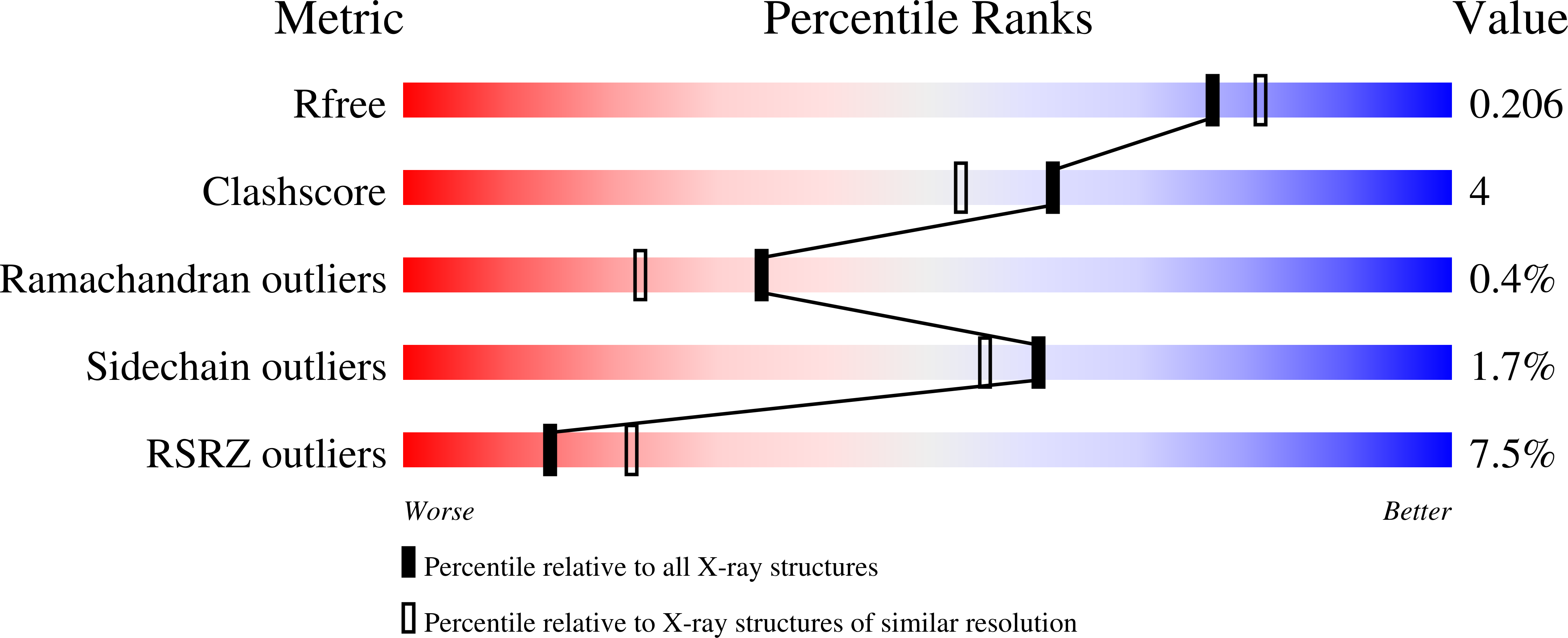Crystal structure of the gamma-secretase component nicastrin.
Xie, T., Yan, C., Zhou, R., Zhao, Y., Sun, L., Yang, G., Lu, P., Ma, D., Shi, Y.(2014) Proc Natl Acad Sci U S A 111: 13349-13354
- PubMed: 25197054
- DOI: https://doi.org/10.1073/pnas.1414837111
- Primary Citation of Related Structures:
4R12 - PubMed Abstract:
γ-Secretase is an intramembrane protease responsible for the generation of amyloid-β (Aβ) peptides. Aberrant accumulation of Aβ leads to the formation of amyloid plaques in the brain of patients with Alzheimer's disease. Nicastrin is the putative substrate-recruiting component of the γ-secretase complex. No atomic-resolution structure had been identified on γ-secretase or any of its four components, hindering mechanistic understanding of γ-secretase function. Here we report the crystal structure of nicastrin from Dictyostelium purpureum at 1.95-Å resolution. The extracellular domain of nicastrin contains a large lobe and a small lobe. The large lobe of nicastrin, thought to be responsible for substrate recognition, associates with the small lobe through a hydrophobic pivot at the center. The putative substrate-binding pocket is shielded from the small lobe by a lid, which blocks substrate entry. These structural features suggest a working model of nicastrin function. Analysis of nicastrin structure provides insights into the assembly and architecture of the γ-secretase complex.
Organizational Affiliation:
Ministry of Education Key Laboratory of Protein Science, Tsinghua-Peking Joint Center for Life Sciences, Center for Structural Biology, School of Life Sciences and School of Medicine, Tsinghua University, Beijing 100084, China.


















